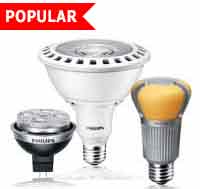Pull the plug on your utility bill
Are the lights in your office building on, but as the saying goes, nobody’s home?
Take a drive around town at 8pm and you will see an awful lot of buildings, public and otherwise, with empty parking lots but lights burning on the inside.I understand that lighting is such an important part of our everyday existence.
They are critical in allowing architects to be able to design spaces of various complexities and size.Lights are necessary for us to be able to complete tasks and they are important for safety. A properly lit space allows you to see where you are going, thus reducing the chance of trips and falls. They are an increasingly important security and design feature.
With all these great benefits, it’s fairly easy to get carried away with the number and types of lighting available to beautify your home or office buildingThere was a time when it was standard to place one light fixture in the center of the ceiling of a room; but today, typical rooms in modern homes may still have that central light, and in addition several down lights used for added effect, wall sconces and even spot lights to provide focus on prized artwork.
If that were not enough, homes and offices are also being designed with numerous down lights around the boxing of the roof, added to this are general security lights around the property, landscape lighting, step lights and the list goes on.All of this comes at great cost.
Not only is there the up-front expense of the light fixture, there’s also the cost for the electrician to install all these lights, then bulbs are required, lights need to be maintained and of course you need to pay the utility for using all this task, security and decorative lighting.According to the U.S. Department of Energy’s Guide to Energy Efficient Lighting, issued in October 2010, lighting costs represent 15 percent of the electricity consumption of the average household.
The Fitchner report titled,” Promoting Sustainable Energy in The Bahamas”, dated September 2010, evidences a similar trend for the Bahamas in that a “normal” Bahamian home may use as much as 14 percent of its electricity on lighting.According to the same report, this number is 29 percent for small public buildings. Therefore, for a medium-sized business with an electricity bill of around $1,000 per month, $290 may be spent on lighting.
The question is - how much is spent on lighting rooms that are unoccupied for extended periods, and even overnight?Surely these numbers can be improved on - and in some cases, significantly so.
For zero investment you can set up a “Green Team” for your building, charged with educating staff on the importance of conserving energy and how this impacts the bottom line. A staff member can be assigned to ensure lights are switched off at the end of the work day. The trade off may be you give this person another job title, place their photo on the wall of fame and the designated parking space is optional. But you get my point.An investment in occupancy sensors that automatically switch off lights when rooms are vacant may be cost effective depending on the amount of your bills.
Besides simply switching lights off when not in use, you can ensure that you take advantage of natural lighting as much as possible and make good use of energy-efficient bulbs. To the latter point, ensure that bulbs have an energy star rating, as all bulbs are not created equal. Replace incandescent bulbs with fluorescent or LED bulbs. Ensure that your light controls correspond with your use. One switch should not control one large space when multiple switches would provide the option of only turning on the lights you need at the time.Ask yourself if you really need all those lights. Get an independent assessment of your lighting needs and see if there are some lights you can leave off, eliminate or illuminate more effectively.
Ensure that security lighting has functioning dusk to dawn controls and fit some of your security lights with motions sensors. The use of motion sensors means the lights only turn on if movement on the exterior of the property is detected. The lights thus controlled would only turn on when required and would not stay on all night.
Keep yourself informed, and remember - you have more control of your utility bills than you think.Challenge for this week: Use the tips above to assess if your lighting needs are adequate or if you are wasting money.
source: The Nassau Guardian

















Comments